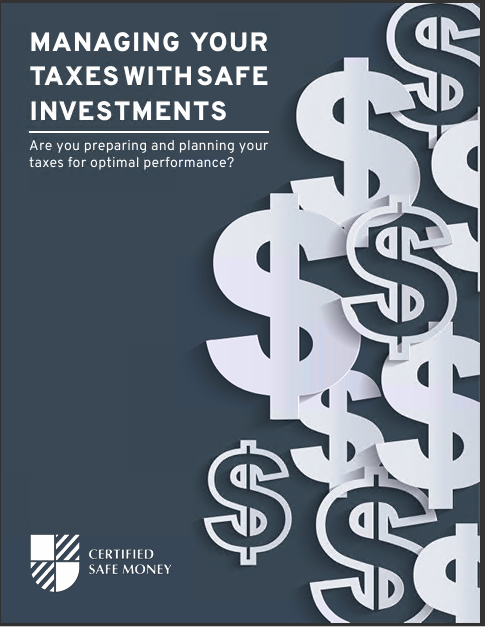Key Takeaways:
- Maximizing retirement contributions in 2024 can lower your taxable income, reducing the taxes you owe.
- Understanding contribution limits and catch-up contributions is essential for optimizing tax-saving benefits in retirement planning.
As we embark on a new year, it’s an opportune time to reassess your retirement savings strategy. Beyond evaluating your investments and adjusting your contribution rate, it’s crucial to recognize the role your retirement contributions play in your overall tax-saving strategy. Retirement accounts offer not only long-term, tax-deferred growth but also immediate tax benefits. In this article, we’ll delve into how maximizing your retirement contributions can lead to substantial tax savings in 2024.
Reducing Your Taxable Income
One of the primary advantages of investing in a 401(k) plan is the ability to reduce your taxable income. When you contribute to a 401(k), the amount you contribute is deducted from your paycheck and is not considered taxable income. Consequently, this reduces the amount of income tax withheld from your monthly earnings. The more you contribute, the less tax you’ll have to pay.
For instance, if you earn a gross income of $4,000 per month and decide to contribute 10% of your income to your 401(k), your monthly contributions of $400 will be deducted from your paycheck. As a result, your taxable income for that month will be $3,600. By consistently making these contributions throughout the year, you’ll effectively reduce your annual taxable income by $4,800.
Providing Tax Deductions with IRAs
Not everyone has access to a 401(k) plan, but you can still benefit from tax advantages through Individual Retirement Accounts (IRAs). While both IRAs and 401(k) plans offer tax breaks on contributions, they operate differently. In the case of 401(k) contributions, they reduce your taxable income at the time of contribution. In contrast, IRAs provide a tax deduction when you file your annual tax return.
Here’s how it works: If you earn $4,000 per month and want to contribute 10% of your salary to your IRA, you can contribute $400 each month, totaling $4,800 annually. You can then claim this deduction on line 20 of Schedule 1 of your Form 1040 when filing your tax return. If you are self-employed and utilize a SIMPLE IRA, your deduction will be claimed on line 16 of Schedule 1.
Ultimately, your IRA deduction lowers your taxable income when you complete Form 1040. While the process may differ from 401(k) contributions, the result is the same: a reduction in the taxes you owe.
Eliminating Annual Investment Taxes
All qualified retirement plans, including IRAs and 401(k) plans, offer tax-deferred growth. This means that you are not required to pay taxes annually on your investment gains, including dividends, interest, or realized profits from sales. Instead, these gains remain untaxed until you withdraw money from your account, typically during retirement. This tax-deferred growth not only accelerates the compound growth of your investments but also reduces your annual tax liability.
Consider an example where you have a $100,000 retirement portfolio earning 4% annually in dividends and interest, resulting in $4,000 of annual income. If you earned this income in a taxable investment account, you would be liable for annual taxes ranging from hundreds to thousands of dollars. However, your retirement account shields these gains from taxes until withdrawal.
Maximizing Contributions in 2024
To derive the greatest tax benefit, you should aim to contribute the maximum allowed by the IRS. The contribution limits vary depending on the type of retirement plan you utilize, and they can change annually. Here are the maximum contribution limits for IRAs and 401(k) plans for both 2023 and 2024:
- 401(k) plans: $22,500 in 2023, $23,000 in 2024
- Traditional IRAs: $6,500 in 2023, $7,000 in 2024
- SEP-IRAs: lesser of 25% of compensation or $66,000 in 2023, $69,000 in 2024
- SIMPLE IRAs: $15,500 in 2023, $16,000 in 2024
These limits represent the maximum contributions for most individuals to maximize their tax benefits. However, if you are aged 50 or older, the IRS permits “catch-up” contributions, allowing for additional contributions beyond the standard limits. Here are the catch-up contribution amounts for 2023 and 2024:
- 401(k) plans: $7,500
- Traditional IRAs: $1,000
- SEP-IRAs: $1,000
- SIMPLE IRAs: $3,500
This means that if you are at least 50 years old and contributing to a 401(k) plan, you can potentially contribute up to $30,500 in 2024, provided you have sufficient earned compensation. Such contributions can result in significant annual tax savings, especially for those in higher tax brackets.
Conclusion
Maximizing your retirement contributions in 2024 is a tax-efficient strategy that not only prepares you for a secure retirement but also reduces your immediate tax liability. By taking full advantage of retirement plans, such as 401(k)s and IRAs, you can lower your taxable income, claim deductions, and benefit from tax-deferred growth. Assess your financial situation, consider the contribution limits, and consult with a financial advisor to optimize your retirement savings strategy and enjoy the tax-saving benefits it offers.
Contact Information:
Email: fspgriego@gmail.com
Phone: 5052814047














